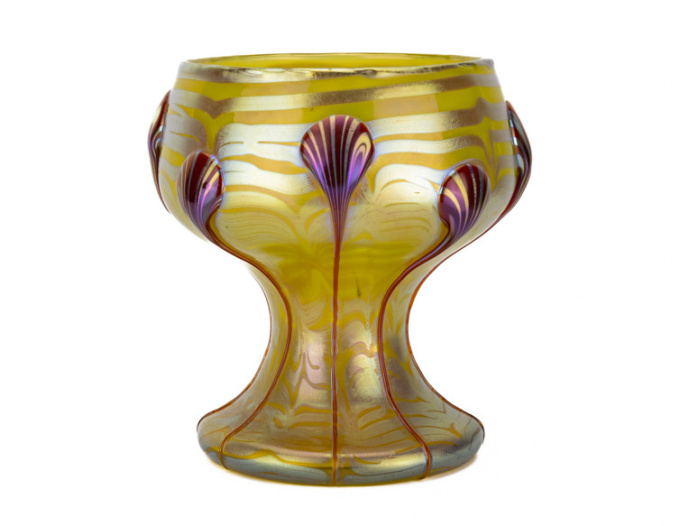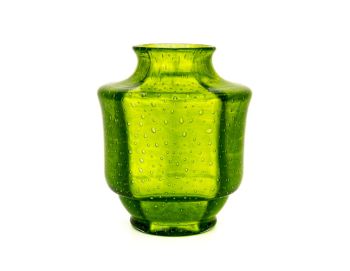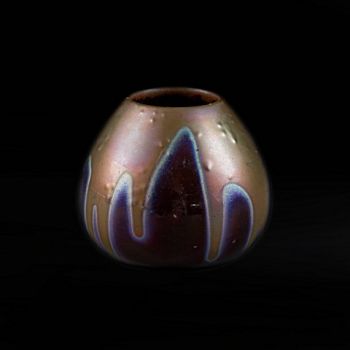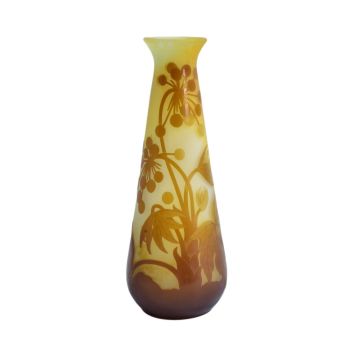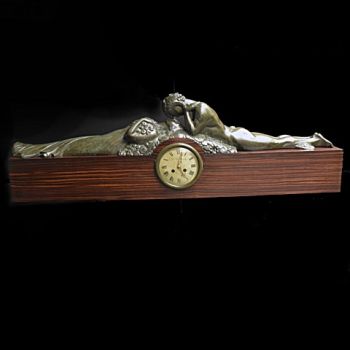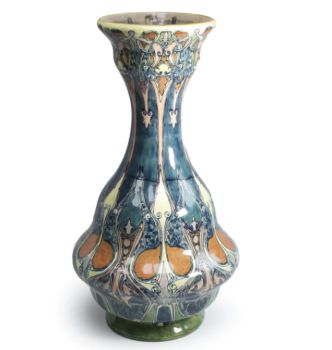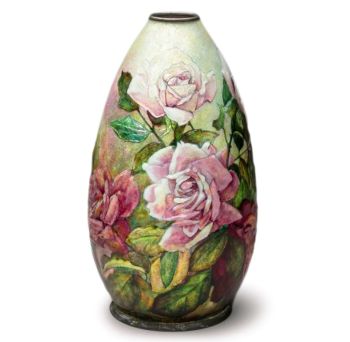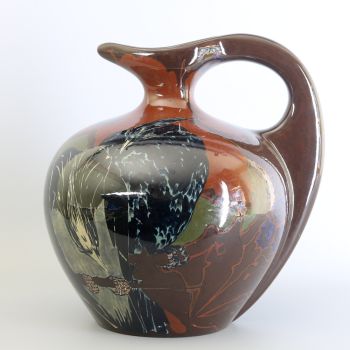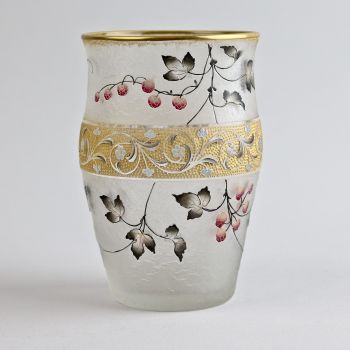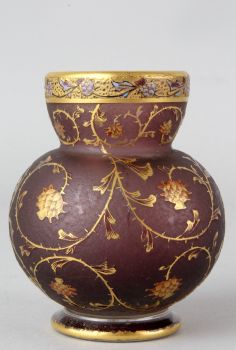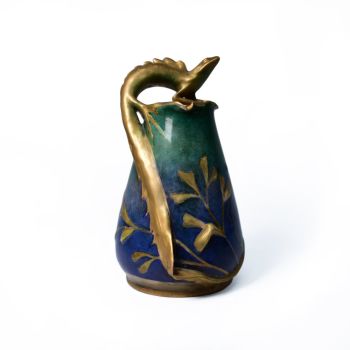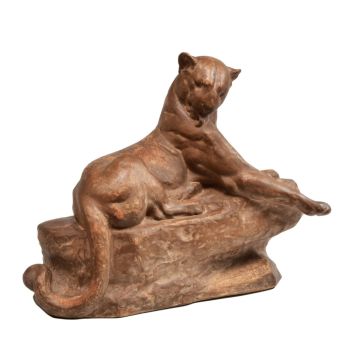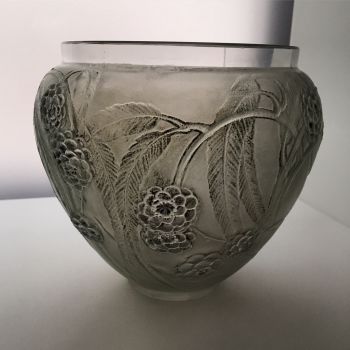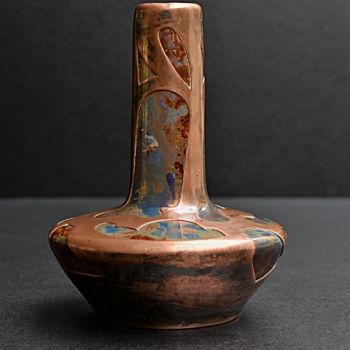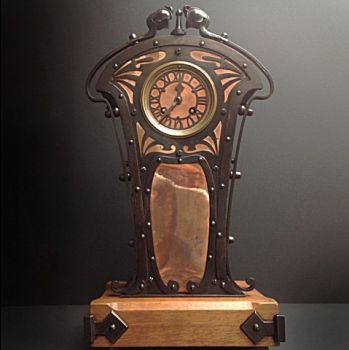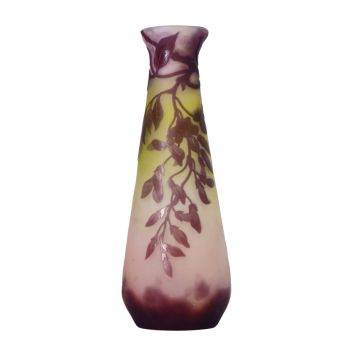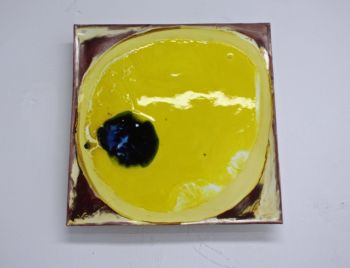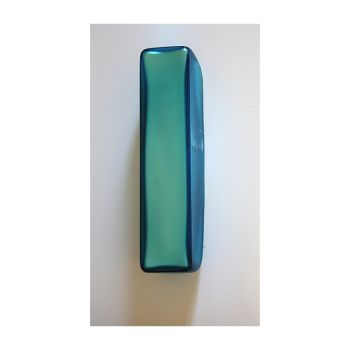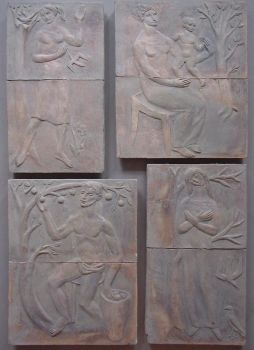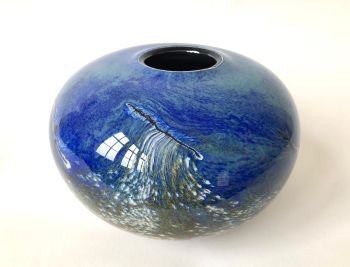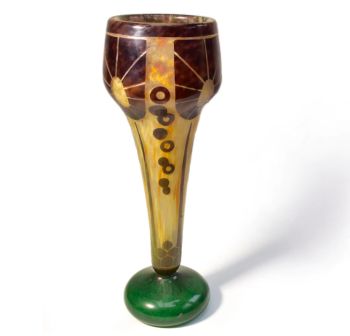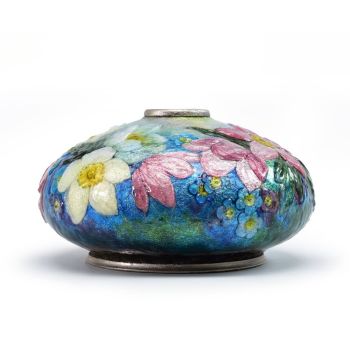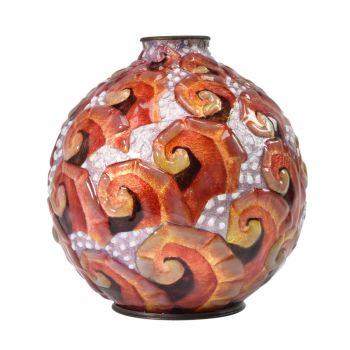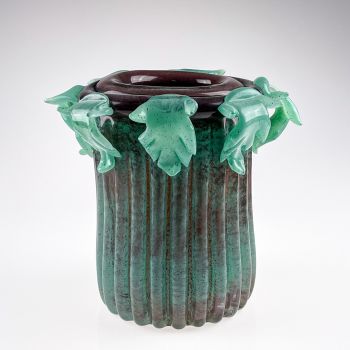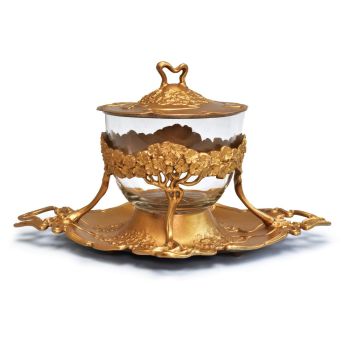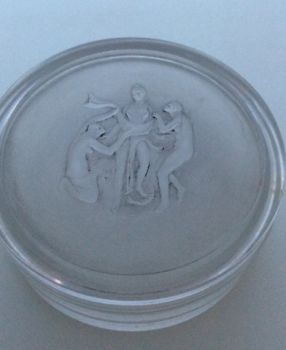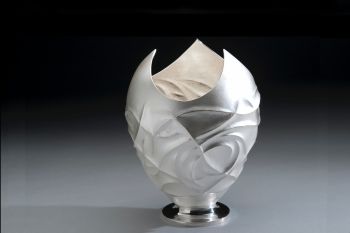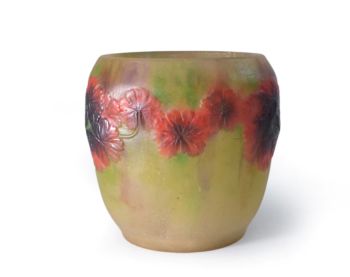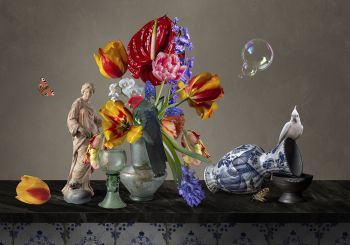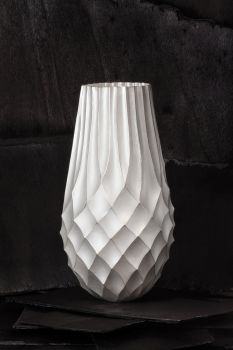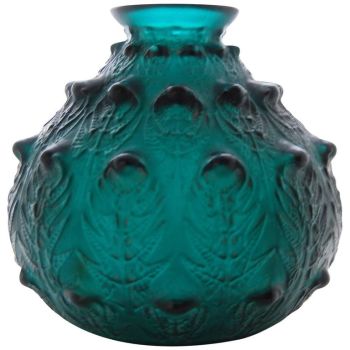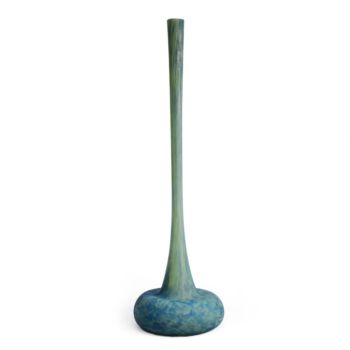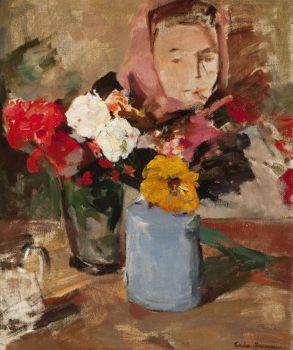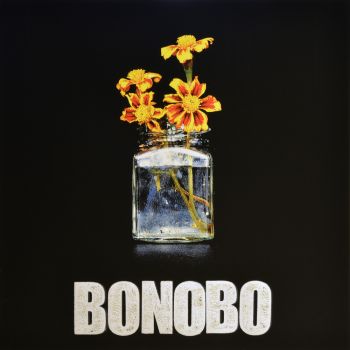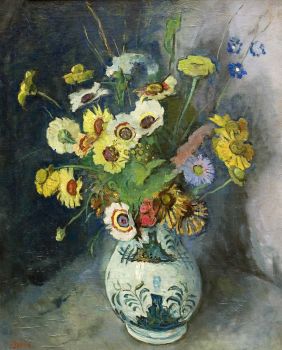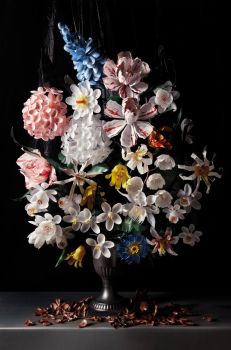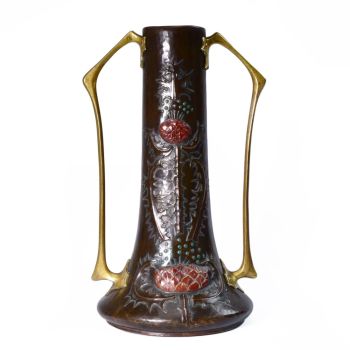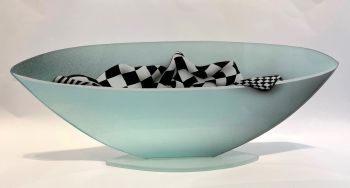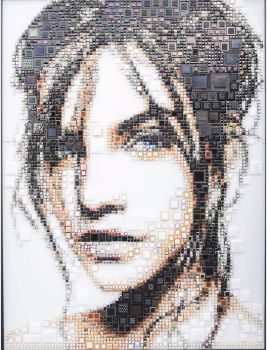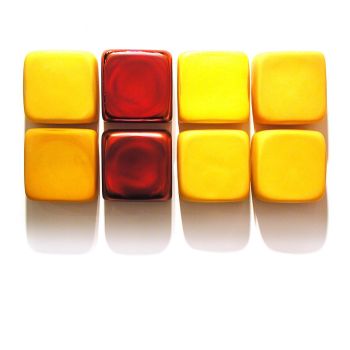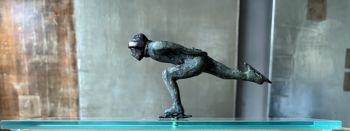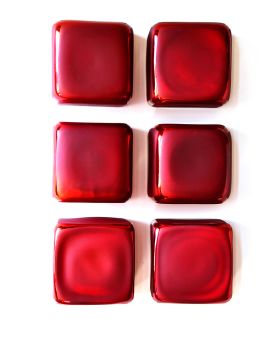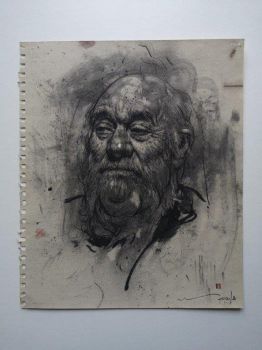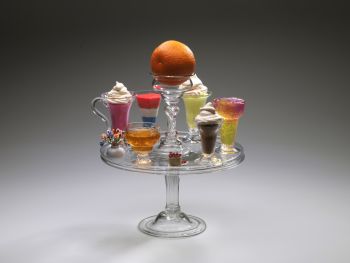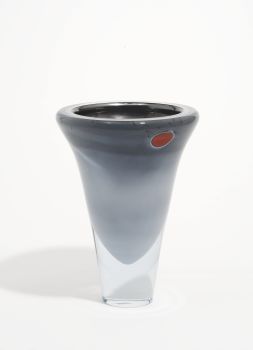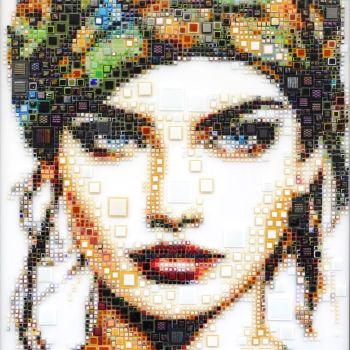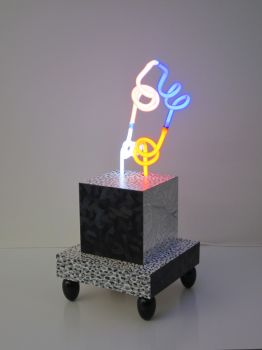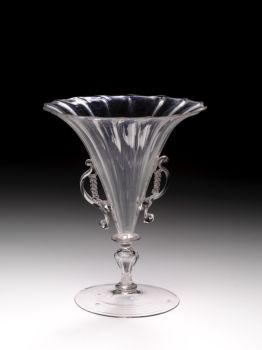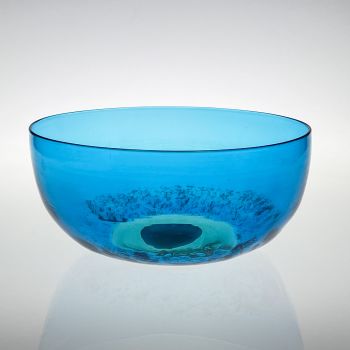Johann Loetz Witwe – Phänomen Genre 1/4 1900 - 1909
Johann Loetz (Lötz) Witwe Klostermühle
Verre
15 cm, ø 11 cm
ConditionExcellent
Actuellement indisponible via Gallerease
- Sur l'oeuvre d'artAfter winning a Grand Prix medal at the World Exhibition in Paris in 1900, Johann Loetz Witwe introduced more and more new designs. These successful and innovative designs were presented under Phänomen Genre’s and are among the best kinds of designs.
This vase dates from this period and was presented in the year 1900 under Phänomen Genre 1/4. This characteristic design with iridescent tadpoles is made in 4 different ground colors of glass. Our vase is blown in a ground color of metallic yellow glass with vertical tadpoles in metallic red with silver vertical threads applied all around the body.
The shape of the vase has a chalice shape and was designed in the year 1900. This design is included in the literature under production number Series II 731. The vase is nicely signed in the improved pontil with “Loetz Austria”. - Sur l'artiste
La verrerie Loetz a existé à Klostermuhle, en Autriche, pendant un peu plus de cent ans, à partir de 1840. Mais son apogée a eu lieu du vivant de Max Ritter Von Spaun, petit-fils du premier Johann Loetz qui avait fondé l'entreprise.
Von Spaun a repris l'entreprise en 1879 et l'a dirigée jusqu'en 1908, un an avant sa mort. Il est assisté d'Eduard Prochaska, son spécialiste technique, et ensemble ils inventent, conçoivent et produisent toute une série de merveilleux nouveaux types de verre, en déposant plusieurs brevets et en remportant des prix dans toutes les grandes expositions mondiales des années 1890 et des premières années de le nouveau siècle.
La société Loetz figurait parmi les leaders du design Art Nouveau et en particulier du verre d'art irisé. Le verre "Papillon", comme le vase de gauche, est parfois appelé aujourd'hui verre "à tache d'huile". Une autre coloration préférée de Loetz était le verre irisé avec des traînées tirées appelé verre « Phenomenon ».
Il y avait des vases irisés avec des rubans de couleurs métalliques enroulés sur la surface, et de nombreux motifs spectaculaires avec des traînées appliquées de belles couleurs, ou simplement retirés du corps du verre pour former des poignées ou une décoration.
Vers 1900, la société a commencé à collaborer avec des designers extérieurs et de grands artistes ont conçu des pièces pour Lotz, notamment Joseph Hofmann, Koloman Moser, Maria Kirchner et Hofstatter.
En 1908, Loetz a été repris par le fils de Max Von Spaun, également appelé Max, et bien qu'il ait connu des difficultés financières (faillite en 1911 et à nouveau en 1931), il y avait plusieurs grands designers dont le travail a été produit par Loetz au cours de ces années et à travers l'art période déco. Ceux-ci comprenaient Adolf Beckert et Michael Powolny.
Artwork details
Related artworks
Johann Loetz (Lötz) Witwe Klostermühle
Johann Loetz Witwe – Jugendstil Cobalt Papillon vaas1900 - 1910
Prix sur demandeAntiques Emporium
Johann Loetz (Lötz) Witwe Klostermühle
Johann Loetz Witwe - Phänomen Genre 7773 – Orange1900 - 1910
Prix sur demandeAntiques Emporium
1 - 4 / 8- 1 - 4 / 24
Amalric Walter
Amalric Walter & Henri Bergé – Crabe plumier1920 - 1929
Prix sur demandeAntiques Emporium
1 - 4 / 24Herman Bogman jr.
Flower still life of a nasturtium in a blue vase1950 - 1965
Prix sur demandeAdelwein Kunst
René Lalique
Un très rare vase «Fougères» vert foncé conçu par R. Lalique1912
€ 8.950Lennart Booij Fine Art and Rare Items
 Sélectionné par
Sélectionné parSilla Scheepens
1 - 4 / 24Artiste Inconnu
An Indian part-gilt silver-clad ceremonial sceptre or mace with a tiger’s head1850 - 1900
Prix sur demandeZebregs & Röell - Fine Art - Antiques
 Sélectionné par
Sélectionné parDanny Bree
Gabriel Argy-Rousseau
Gabriël Argy-Rousseau – Crabes et Algues vase – 19201920 - 1929
Prix sur demandeAntiques Emporium
1 - 4 / 24

